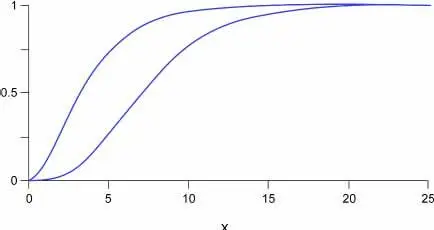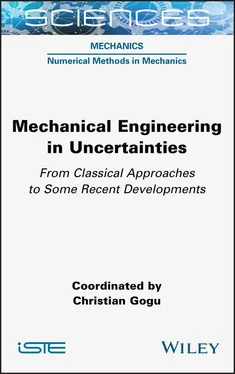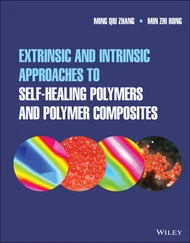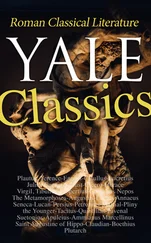1 ...7 8 9 11 12 13 ...16 We can also deduce, from the previous case study, a third example of a counterintuitive situation. Let us consider that the true variability on the excitation frequencies corresponds to a uniform distribution in [ a , b ]. This uncertainty is not exactly known and by attempting to be conservative we assume that the uncertainty is quite large, modeling it by a uniform distribution in [ ã ,  ]. In the design phase, the engineer can typically look for ways to modify the structure in order to reduce the probability of failure. Suppose the engineer makes a modification for this purpose (for example, a change in dimensions, in materials), which results in moving the failure area somewhere in the interval [ ã , a ]. If we consider the real probability distribution over the excitation frequencies f ( uniform in [ a , b ]), this change in the design has the consequence of drastically reducing the probability of failure, since the failure area is outside the interval [ a , b ]. However, since the real distribution is not known and a wider distribution (uniform in [ ã ,
]. In the design phase, the engineer can typically look for ways to modify the structure in order to reduce the probability of failure. Suppose the engineer makes a modification for this purpose (for example, a change in dimensions, in materials), which results in moving the failure area somewhere in the interval [ ã , a ]. If we consider the real probability distribution over the excitation frequencies f ( uniform in [ a , b ]), this change in the design has the consequence of drastically reducing the probability of failure, since the failure area is outside the interval [ a , b ]. However, since the real distribution is not known and a wider distribution (uniform in [ ã ,  ]) has been considered to be conservative, the consequence of the change in design is totally imperceptible in this case. The probability of failure remains exactly the same as before the change in design, since the region of failure is still located within the bounds [ ã ,
]) has been considered to be conservative, the consequence of the change in design is totally imperceptible in this case. The probability of failure remains exactly the same as before the change in design, since the region of failure is still located within the bounds [ ã ,  ]. This third example illustrates situations where the inappropriate modeling of epistemic uncertainties by probability distributions can prevent the proper prediction of tendencies in the variation of the probability of failure due to changes in design.
]. This third example illustrates situations where the inappropriate modeling of epistemic uncertainties by probability distributions can prevent the proper prediction of tendencies in the variation of the probability of failure due to changes in design.
We have seen here, through three examples, some of the limitations of an entirely probabilistic modeling of some uncertainties of epistemic nature, especially in the presence of a very small amount of data, which does not allow a specific distribution to be associated with random variables. These limitations have motivated the development of additional approaches, which we shall review in the following sections. A first such approach simply consists of an extension of the probability theory: this is the probability box approach.
1.4. Probability box theory (p-boxes)
Probability box (or p-box) theory has been developed to deal with cases where the probability distribution ℙX of a random variable X cannot be accurately determined, thus combining an aleatory component and an epistemic component of uncertainty. Within the framework of probability box theory, the distribution function FX associated with the unknown distribution ℙX can only be bounded (exactly or at a given level of confidence): the left bound is a distribution function that will be denoted  and the right bound is a distribution function denoted F . This is illustrated in Figure 1.5.
and the right bound is a distribution function denoted F . This is illustrated in Figure 1.5.
Any distribution function comprised between  and F can thus represent the probability distribution of X . The spacing between
and F can thus represent the probability distribution of X . The spacing between  and F represents the magnitude of the epistemic uncertainty associated with the lack of knowledge of the distribution of X . If
and F represents the magnitude of the epistemic uncertainty associated with the lack of knowledge of the distribution of X . If  and F are superimposed, there is no epistemic uncertainty and the aleatory uncertainty is represented by the distribution function FX =
and F are superimposed, there is no epistemic uncertainty and the aleatory uncertainty is represented by the distribution function FX =  = F .
= F .

Figure 1.5. Illustration of a probability box
A probability box can be interpreted in two different ways: as bounds on the cumulative probability for a given value of x or as bounds on the values of x for a given confidence level. In the example in Figure 1.5, for example, one can read that the probability that x is less than 3 is comprised between 0.05 and 0.3. We can also read that the 95% quantile of X is between x = 8 and 17.
From a formal point of view, a probability box can be defined, adopting the formalism of Ferson et al . (2015), as follows:
DEFINITION 1.15.– Let and F be non-decreasing functions from ℝ to [0,1] satisfying the condition  , ∀ x ∈ ℝ. Let [ F ,
, ∀ x ∈ ℝ. Let [ F ,  ] denote the set of all non-decreasing functions F from ℝ to [0,1] satisfying F ( x )≤ F ( x )≤
] denote the set of all non-decreasing functions F from ℝ to [0,1] satisfying F ( x )≤ F ( x )≤  ( x ),∀ x ∈ ℝ. [ F ,
( x ),∀ x ∈ ℝ. [ F ,  ] is then called a “probability box” .
] is then called a “probability box” .
Note that this approach can be seen as an extension of inaccurate probabilities (Walley 1991) to distribution functions and, consequently, to probability distributions. There are different variants existing derived from this concept of a probability box. For example, in addition to bounding the distribution function F with  and F one can impose additional constraints such as:
and F one can impose additional constraints such as:
– the mean of the probability distributions associated with F must lie within a given interval;
– the variance of the probability distributions associated with F must lie within a given interval;
– the probability laws associated with F must belong to a certain class of distributions.
There are also different types of probability boxes:
– Distributional probability boxes: the probability distribution is assumed to be known and it is only the parameters of the distribution that are not accurately known, thus generating different possible distribution functions (but all of the same type of distribution). Such an approach will be illustrated in Chapter 7of this book.
– Confidence bands: instead of seeing the bounds of the distribution function in an absolute way, this bounding can be seen at a given level of confidence. When an empirical distribution function is obtained from a sample, many developments (for example, the inequalities of (Dvoretzky et al. 1956)) have made it possible to bound the true distribution function from which the samples are derived at a given confidence level. These approaches, known as confidence bands, are obviously closely related to the notion of probability boxes.
Читать дальше

 ]. In the design phase, the engineer can typically look for ways to modify the structure in order to reduce the probability of failure. Suppose the engineer makes a modification for this purpose (for example, a change in dimensions, in materials), which results in moving the failure area somewhere in the interval [ ã , a ]. If we consider the real probability distribution over the excitation frequencies f ( uniform in [ a , b ]), this change in the design has the consequence of drastically reducing the probability of failure, since the failure area is outside the interval [ a , b ]. However, since the real distribution is not known and a wider distribution (uniform in [ ã ,
]. In the design phase, the engineer can typically look for ways to modify the structure in order to reduce the probability of failure. Suppose the engineer makes a modification for this purpose (for example, a change in dimensions, in materials), which results in moving the failure area somewhere in the interval [ ã , a ]. If we consider the real probability distribution over the excitation frequencies f ( uniform in [ a , b ]), this change in the design has the consequence of drastically reducing the probability of failure, since the failure area is outside the interval [ a , b ]. However, since the real distribution is not known and a wider distribution (uniform in [ ã ,  and the right bound is a distribution function denoted F . This is illustrated in Figure 1.5.
and the right bound is a distribution function denoted F . This is illustrated in Figure 1.5.
 , ∀ x ∈ ℝ. Let [ F ,
, ∀ x ∈ ℝ. Let [ F , 










